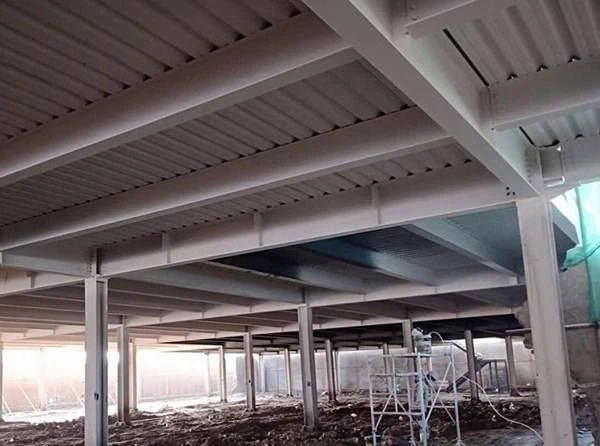Intumescent Coating
Benefits Of Using Intumescent Paint For Fire Protection
Fireproofing with fire resistant paints, a.k.a. intumescent coating, solves a variety of problems that you may not consider until an issue arises. For example, many facility owners are unaware of the importance of protecting something as critical to the integrity of their building as steel beams, which are already considered fireproof.
Steel can lose about 40% of its strength at 1,000 degrees Celsius and up to 90% at 1,500 degrees. Because the average building fire can reach temperatures of 1,500 – 2,000 degrees, maintaining structural rigidity and tensile strength is a serious problem, and collapse can result.
Finally, staying up to date on code is critical when running a commercial facility to avoid serious liability issues. If there are any code violations, you will face a lot of wasted money in fines. You can be confident that your business will remain operational, clean, safe, and maintained while working with an expert professional in intumescent fireproofing.

Intumescent coating is a popular method of providing passive fire protection to load-bearing materials, particularly structural steel, in current architectural design for industrial and commercial buildings. In terms of fire protection, intumescent coating has various advantages:
- It does not affect the intrinsic qualities of materials, such as their mechanical properties.
- It can safeguard your steel frame for up to 120 minutes.
- Intumescent paints can be applied to various materials, including steel, wood, composite parts, and concrete
How Does Intumescent Fireproofing Work?
When a fire or excessive heat develops, the intumescent paint activates. If heat is generated, a chemical reaction in the coating causes it to form a foam of non-flammable gasses such as ammonia or carbon dioxide, resulting in an insulating layer on the coating.
These layers react by absorbing heat and producing a layer of char up to 50 times the thickness of the coating. This slows the spread of the fire and protects the structure’s strength from failure for an extended length of time, potentially saving both lives and the structure itself.
The most common substrate for intumescent coatings is steel, but they can also be found on wood, concrete, and other materials. Intumescent paint for steel, for example, is used on steel beams, columns, and supports in residential and commercial buildings to protect while also adding aesthetic value.
Intumescent coatings are typically classified as industrial coatings. Pipelines are one such application. As fluids are pumped through quickly, friction increases, resulting in rising heat. The same applies to oil and gas rigs.
All that being said, one negative aspect of intumescent paint is that it is difficult to apply. Proper application is critical to the performance of a fire-resistant coating for steel. To obtain the required fire rating, specific suitable, manufacturer-designated primers must be used, as well as numerous coats. Improper application of intumescent coating on steel might result in calamities. For this reason, you should always hire experienced contractors and source materials from only the best. This is where we at Evora come into play.

The Different Types Of Intumescent Fireproofing & What It Includes
The intumescent coating varies in composition and application across sectors.
- Water-based Intumescents: It is more environmentally friendly and has less odor. While inexpensive, they may take longer to cure in high humidity or cold conditions, making them ideal for interior applications where curing time is not crucial.
- Solvent-based Intumescent: Solvent-based coatings are weather and temperature-resistant, drying swiftly and leaving a smooth finish. They are frequently utilized in semi-exposed areas where toughness and quick drying are required.
Epoxy-based Intumescent: Epoxy-based formulations perform well in tough environments such as offshore marine or chemical industries, providing superior hydrocarbon fire protection and corrosion resistance. They are often coated in two portions to create a thick, durable layer that effectively insulates steel members.
Some of the key ingredients of intumescent paint include the following.
- Ammonium Polyphosphate: Ammonium polyphosphate degrades into ammonia and polyphosphoric acid at high temperatures.
- Melamine: Melamine decomposes into ammonia, carbon dioxide, and water at temperatures above 340°F.
- Pentaerythritol: Pentaerythritol has a lower temperature threshold than melamine, decomposing into aldehydes at 190°F.
- Titanium Dioxide: This is unexpected, as titanium dioxide, or TiO2, is best recognized as a white pigment. At normal temperatures, TiO2 is chemically inert. Rutile TiO2 melts at temperatures exceeding 1800°F and binds with polyphosphate.
